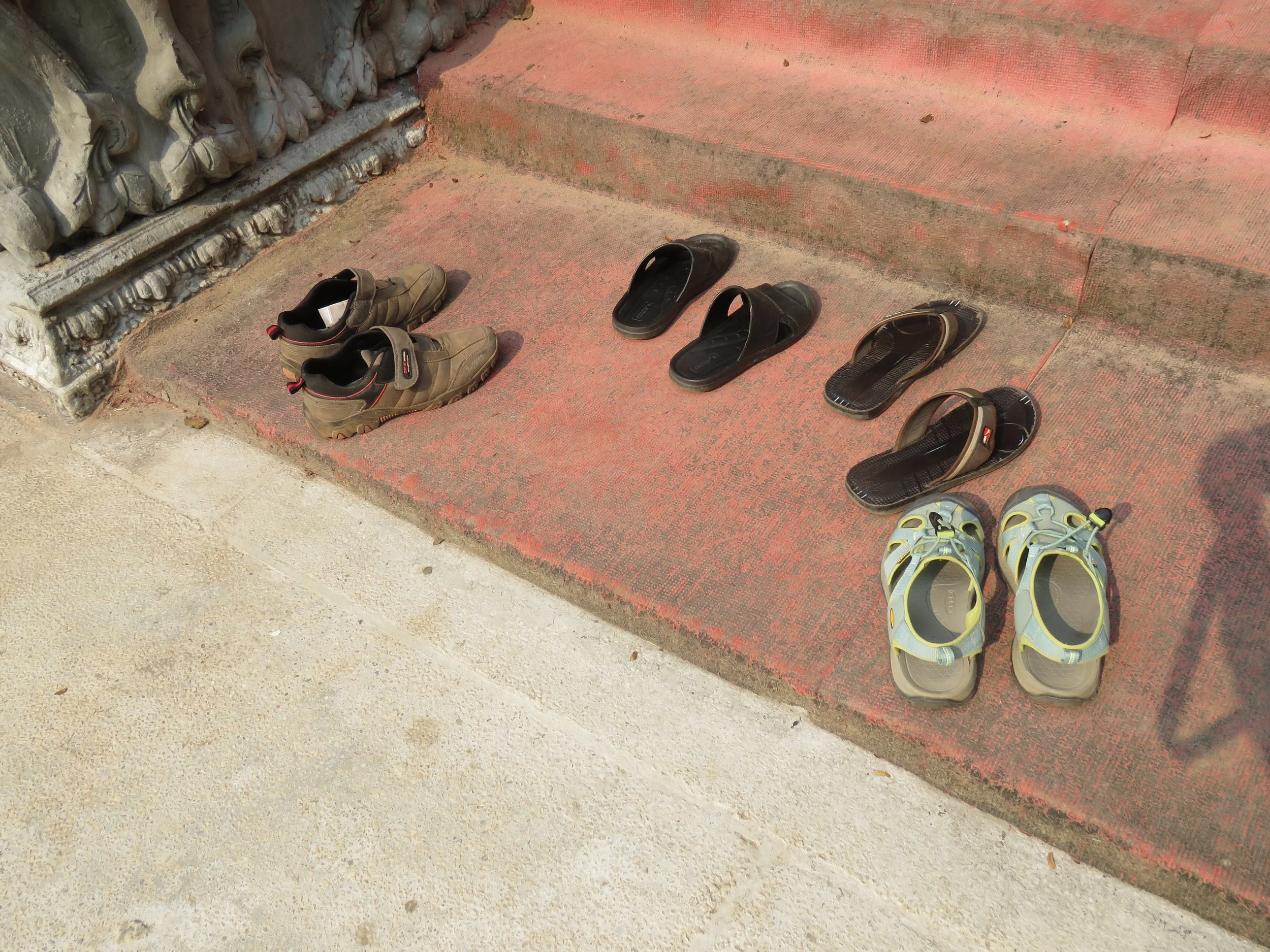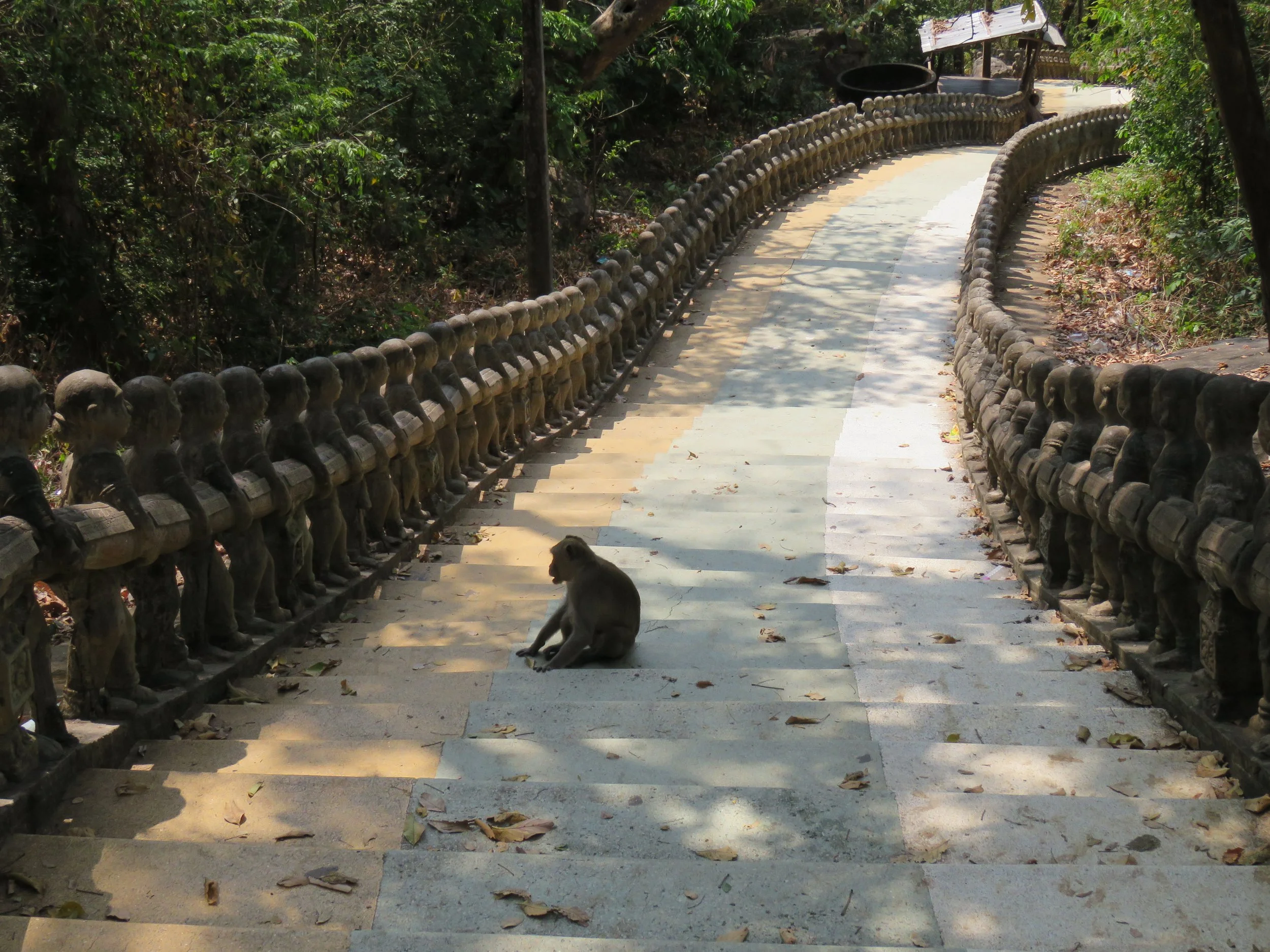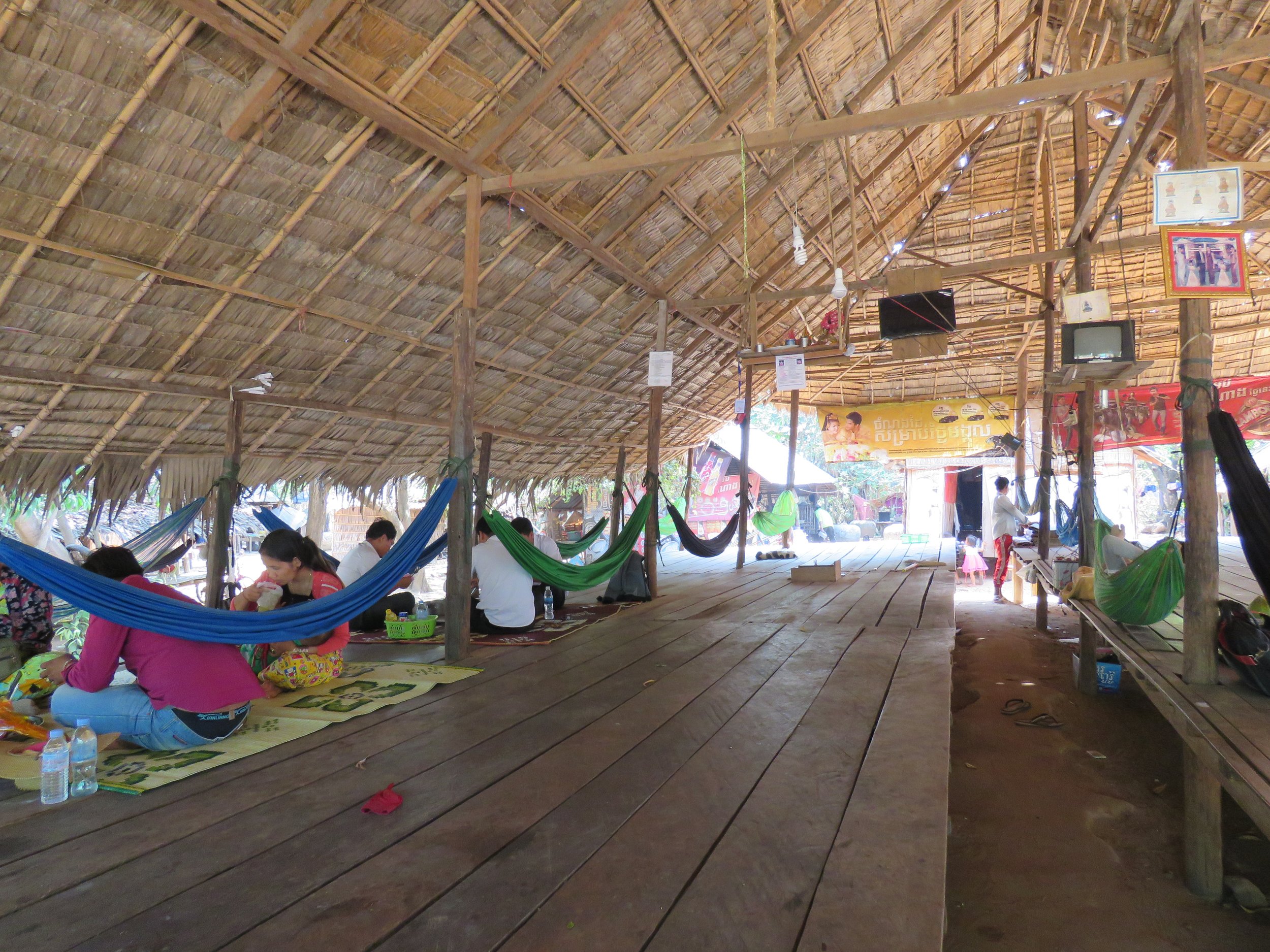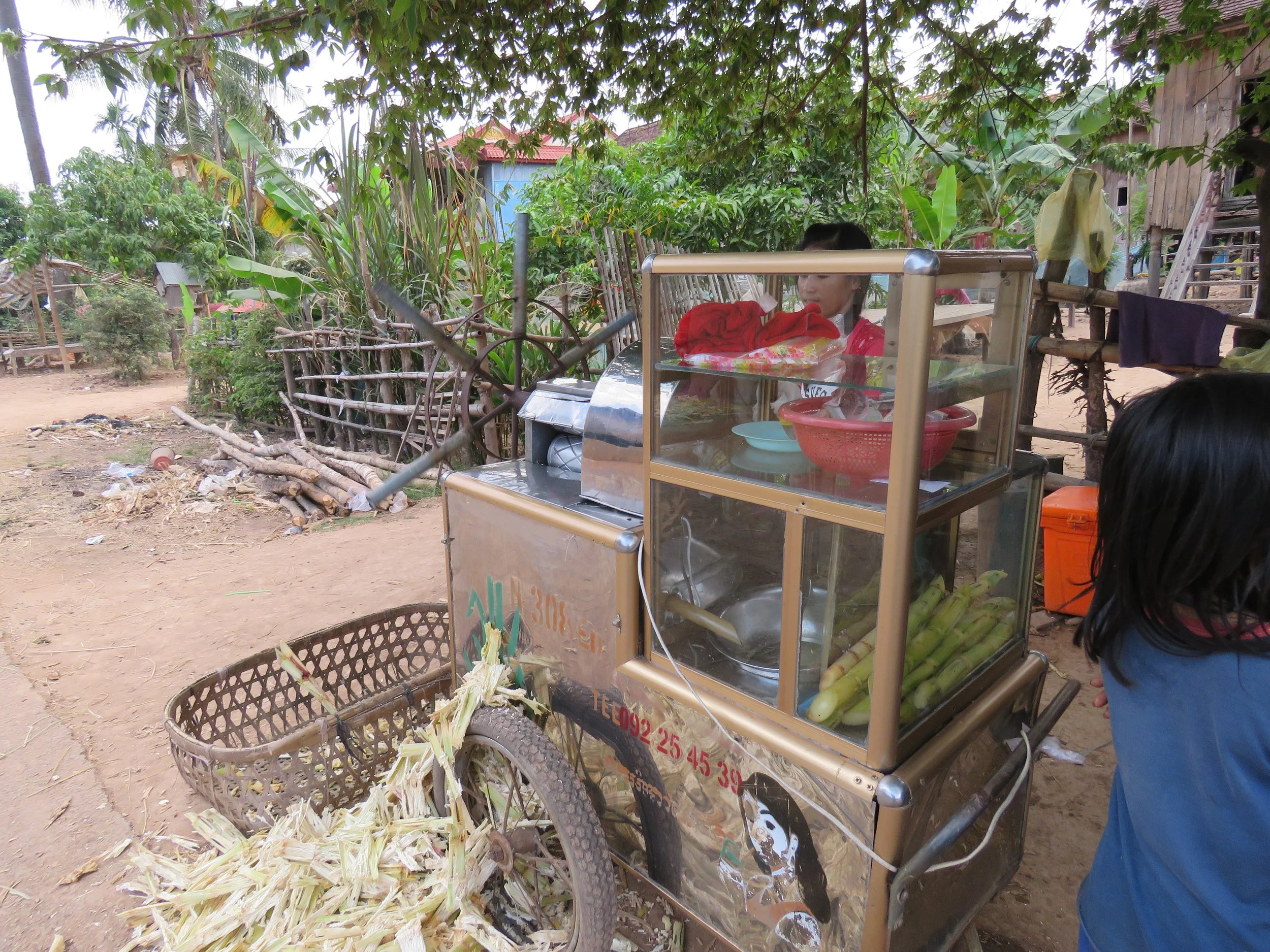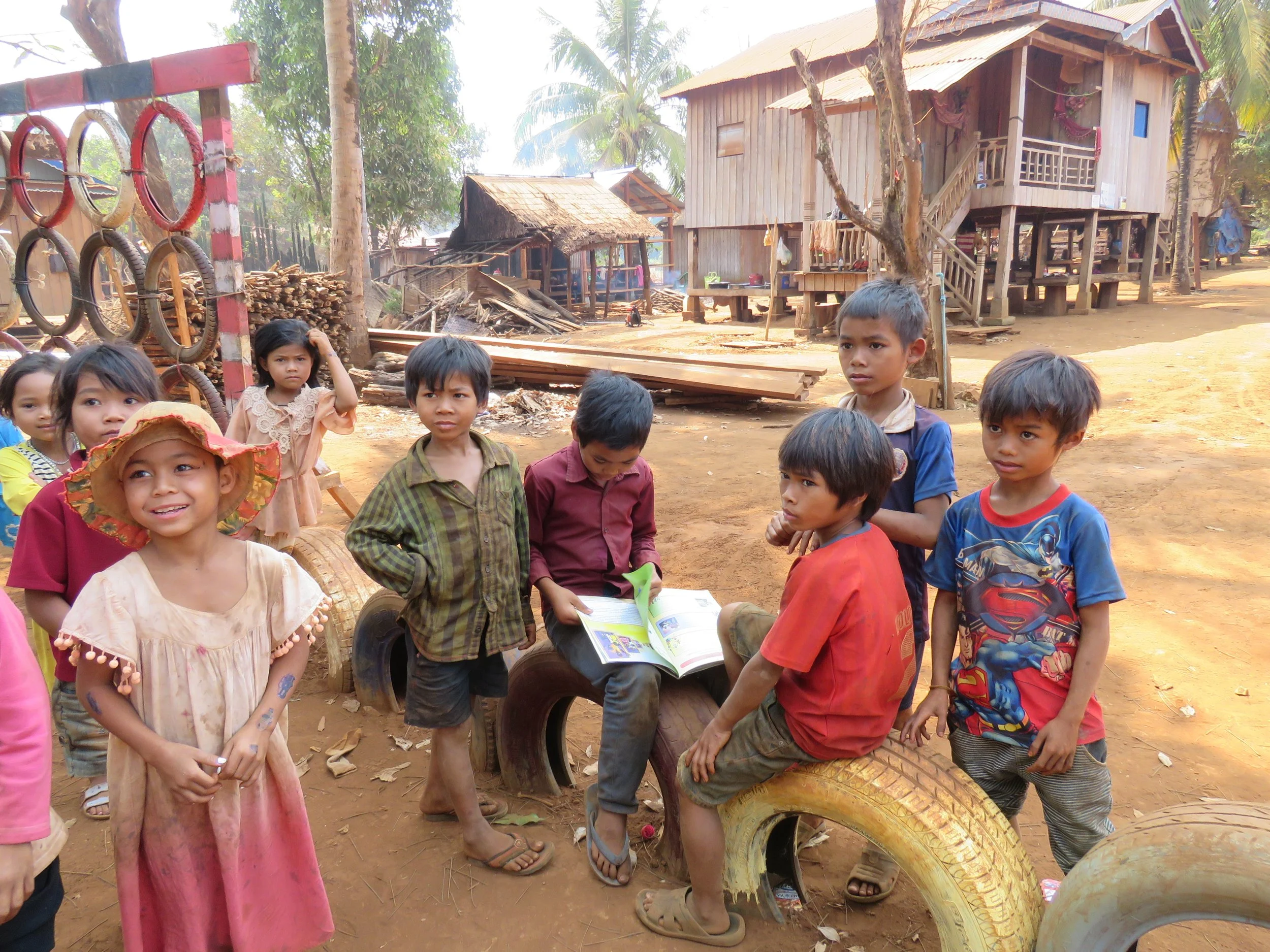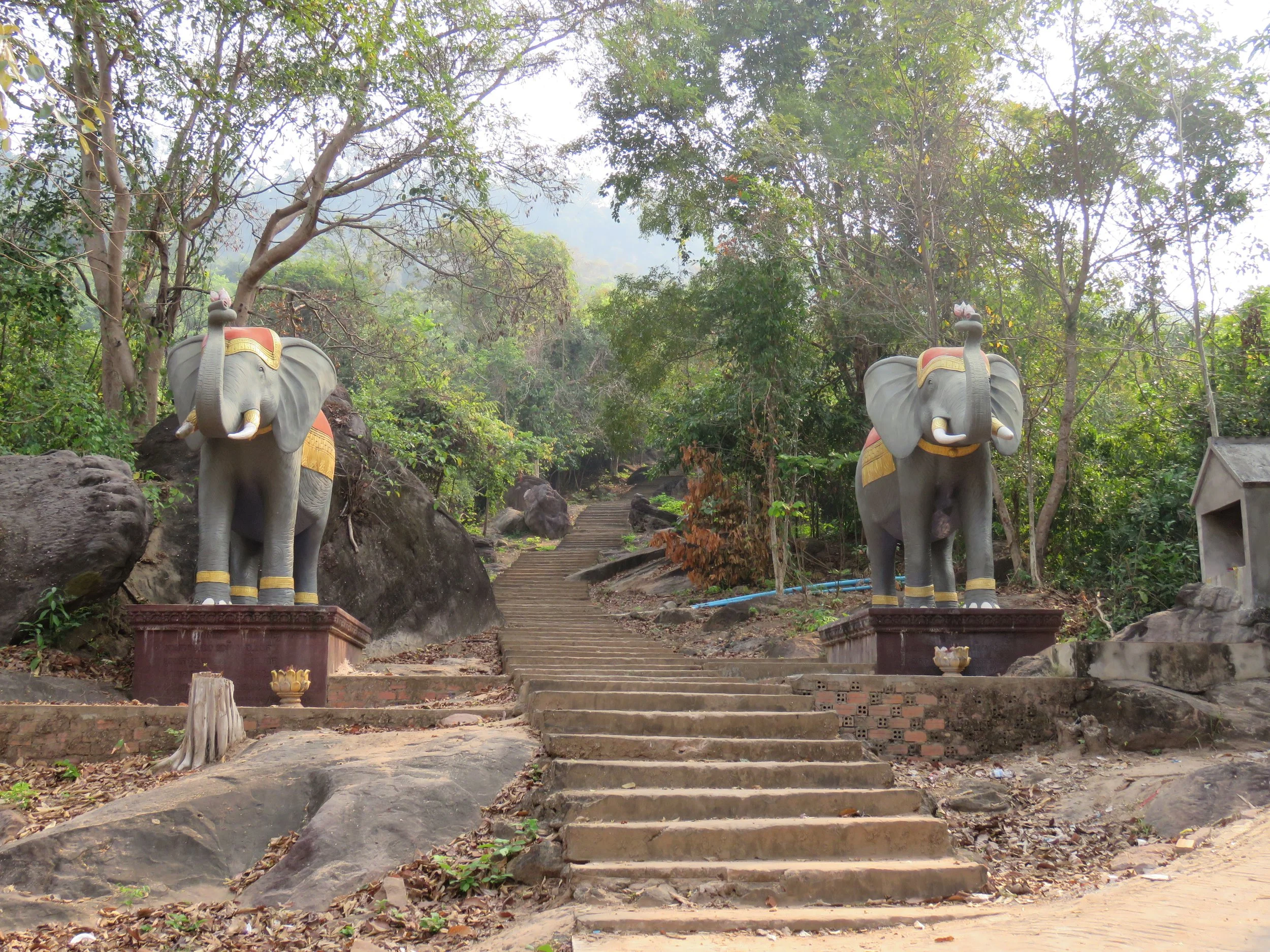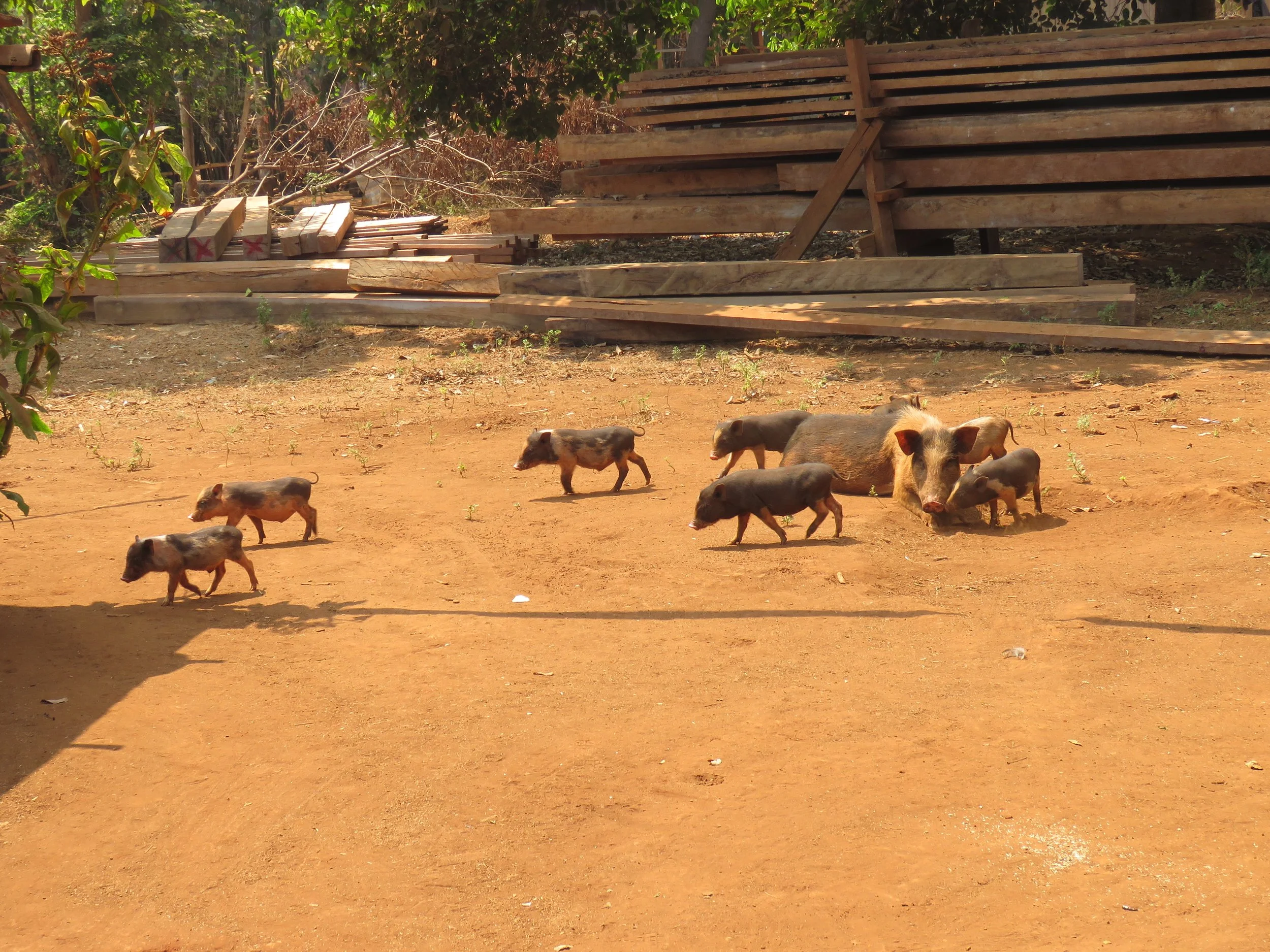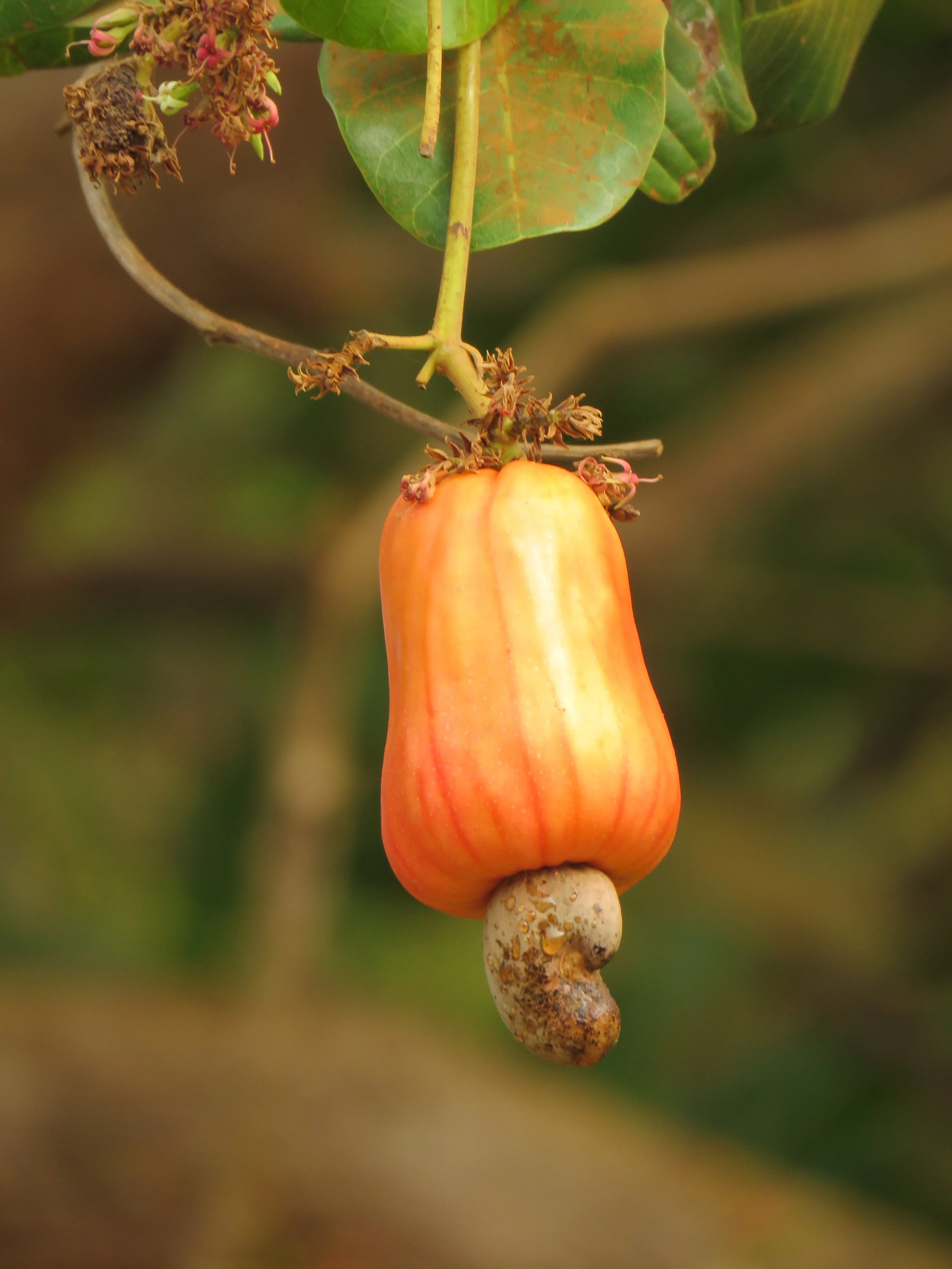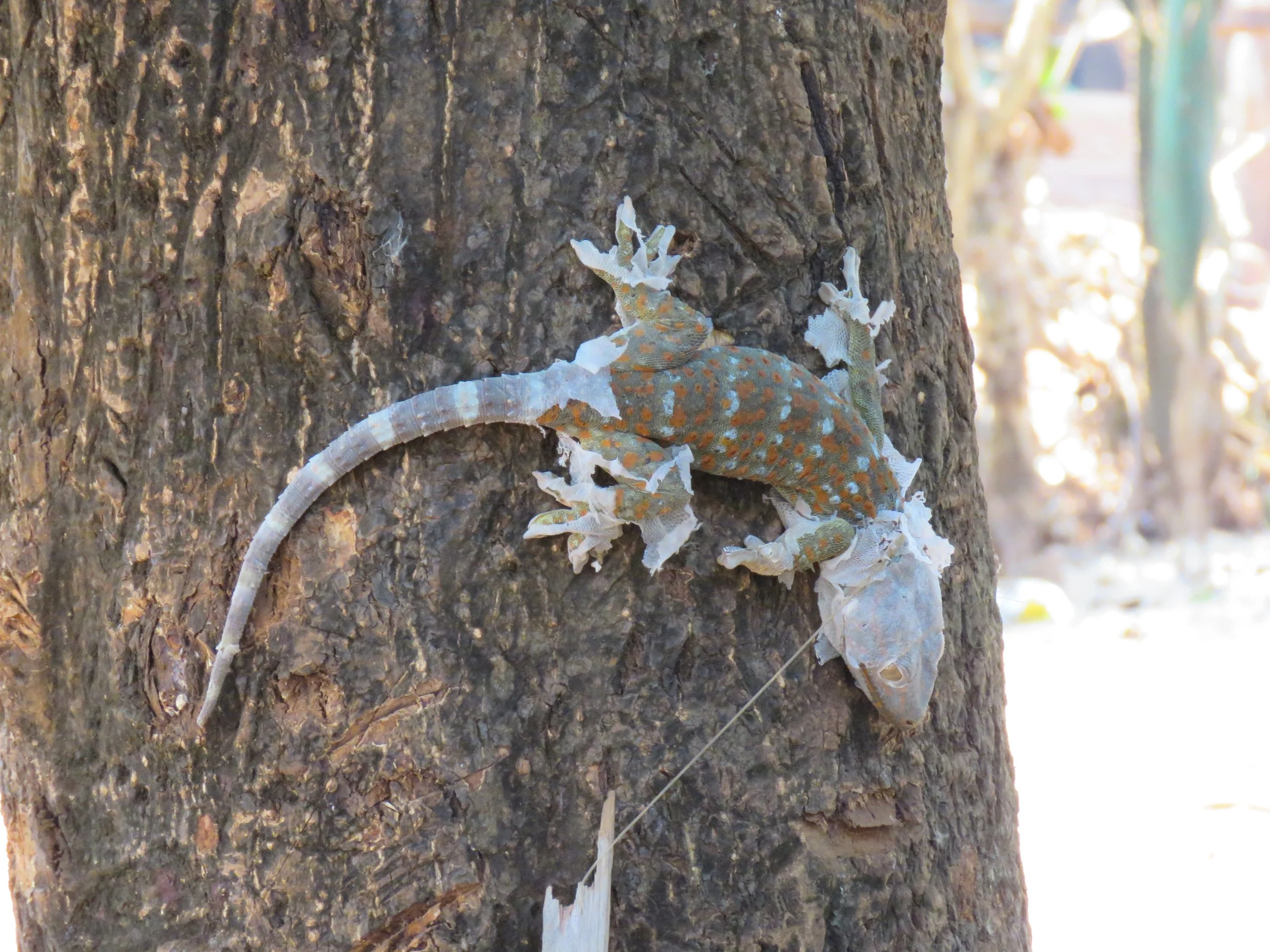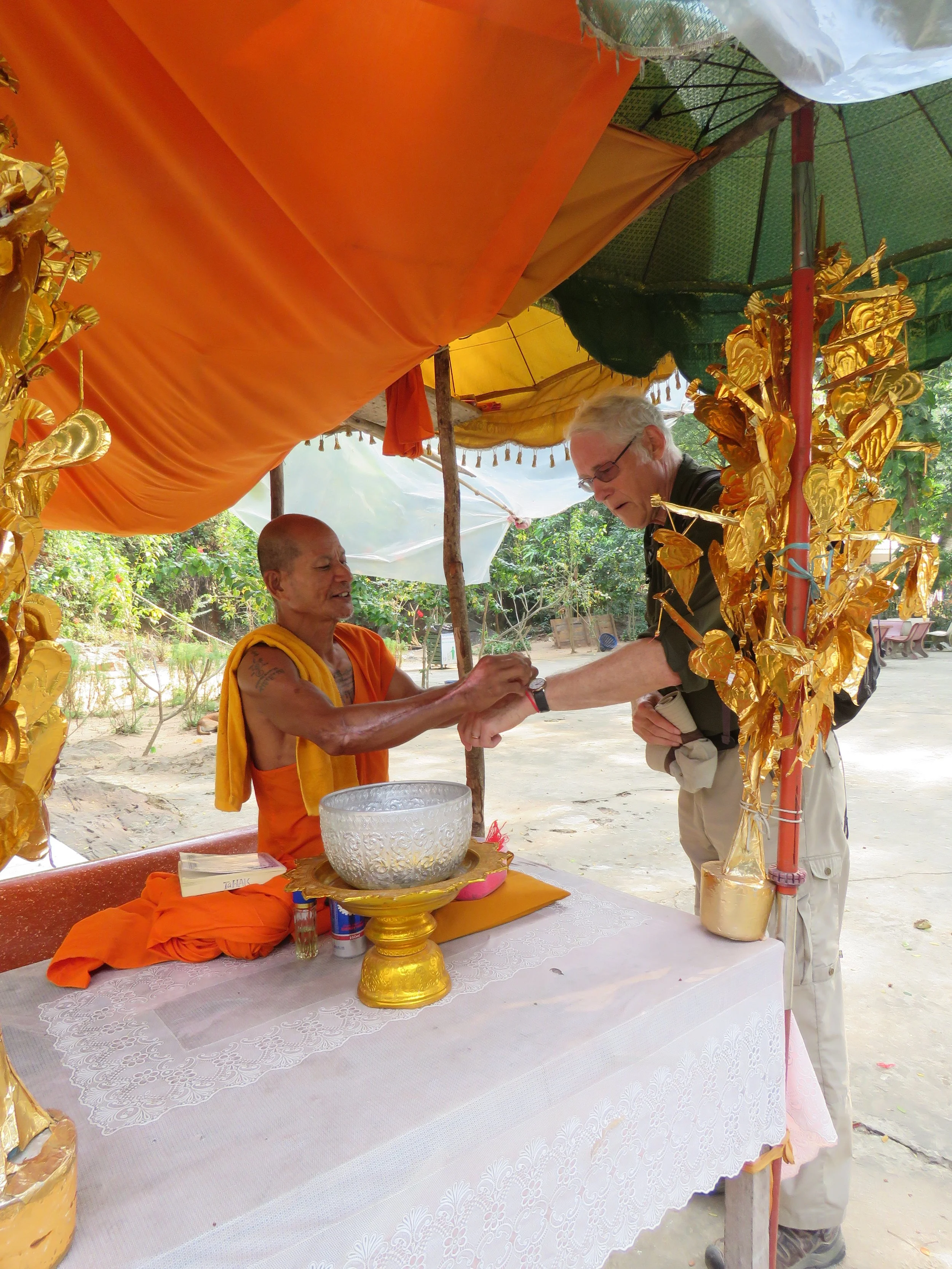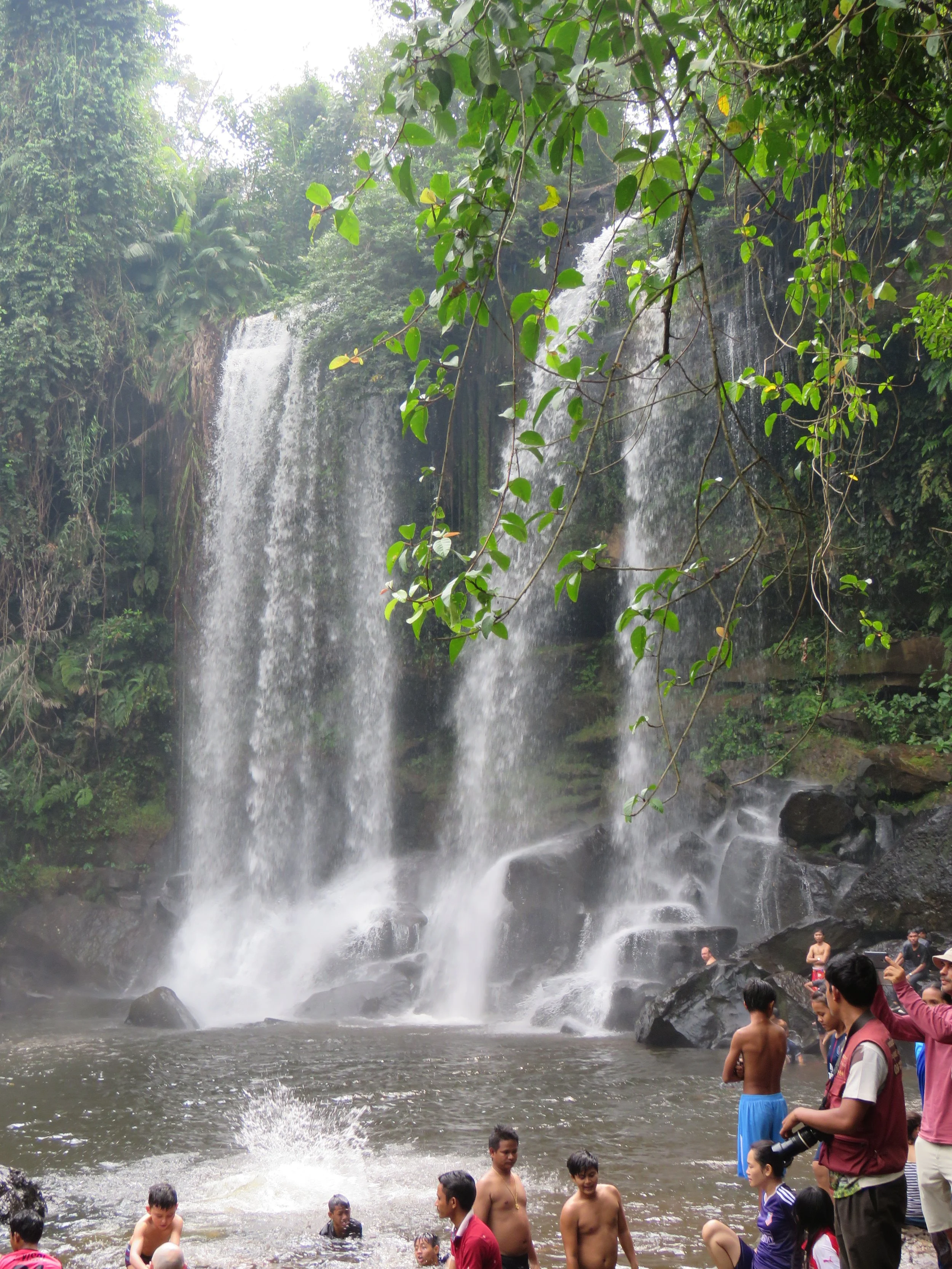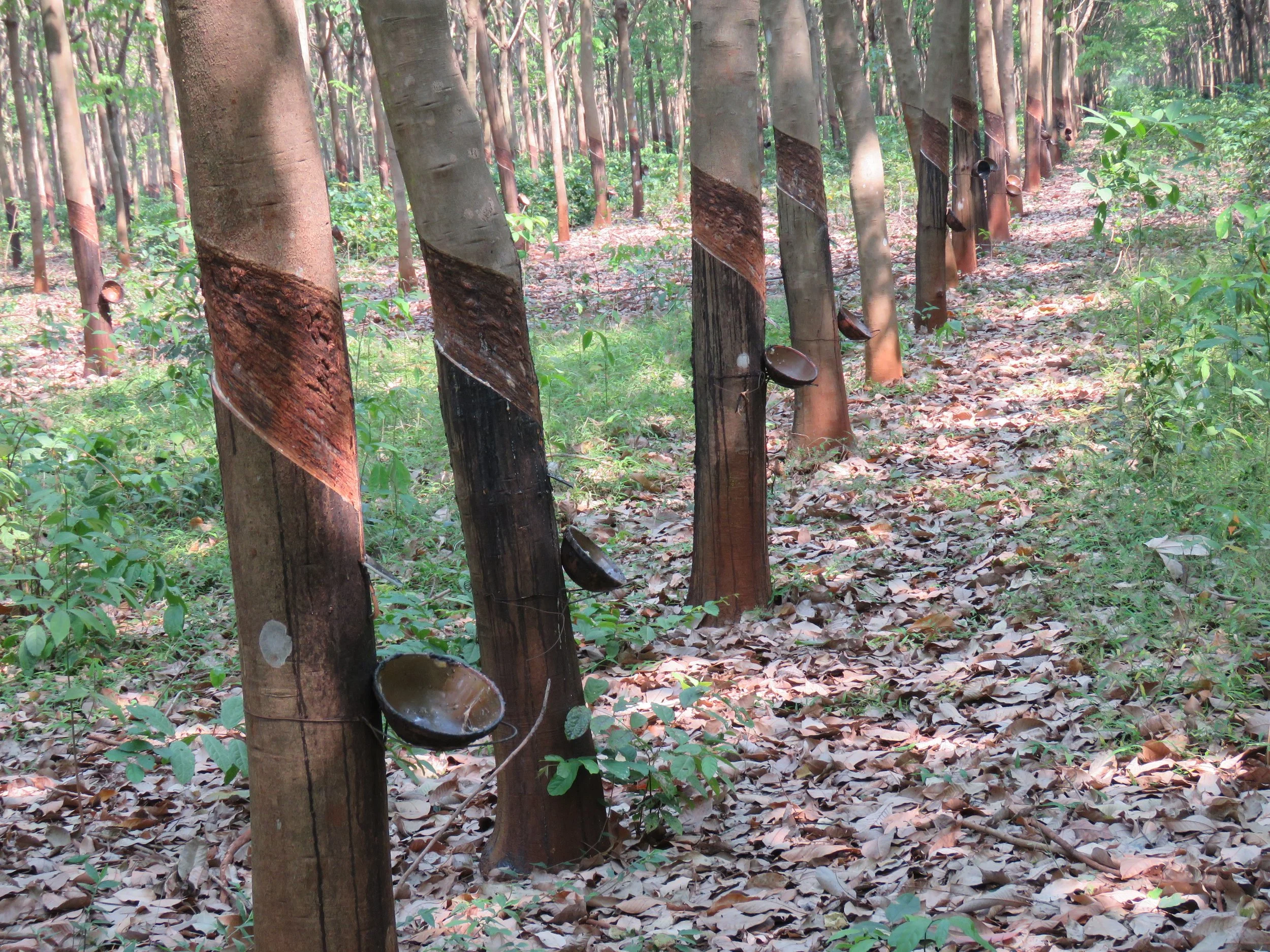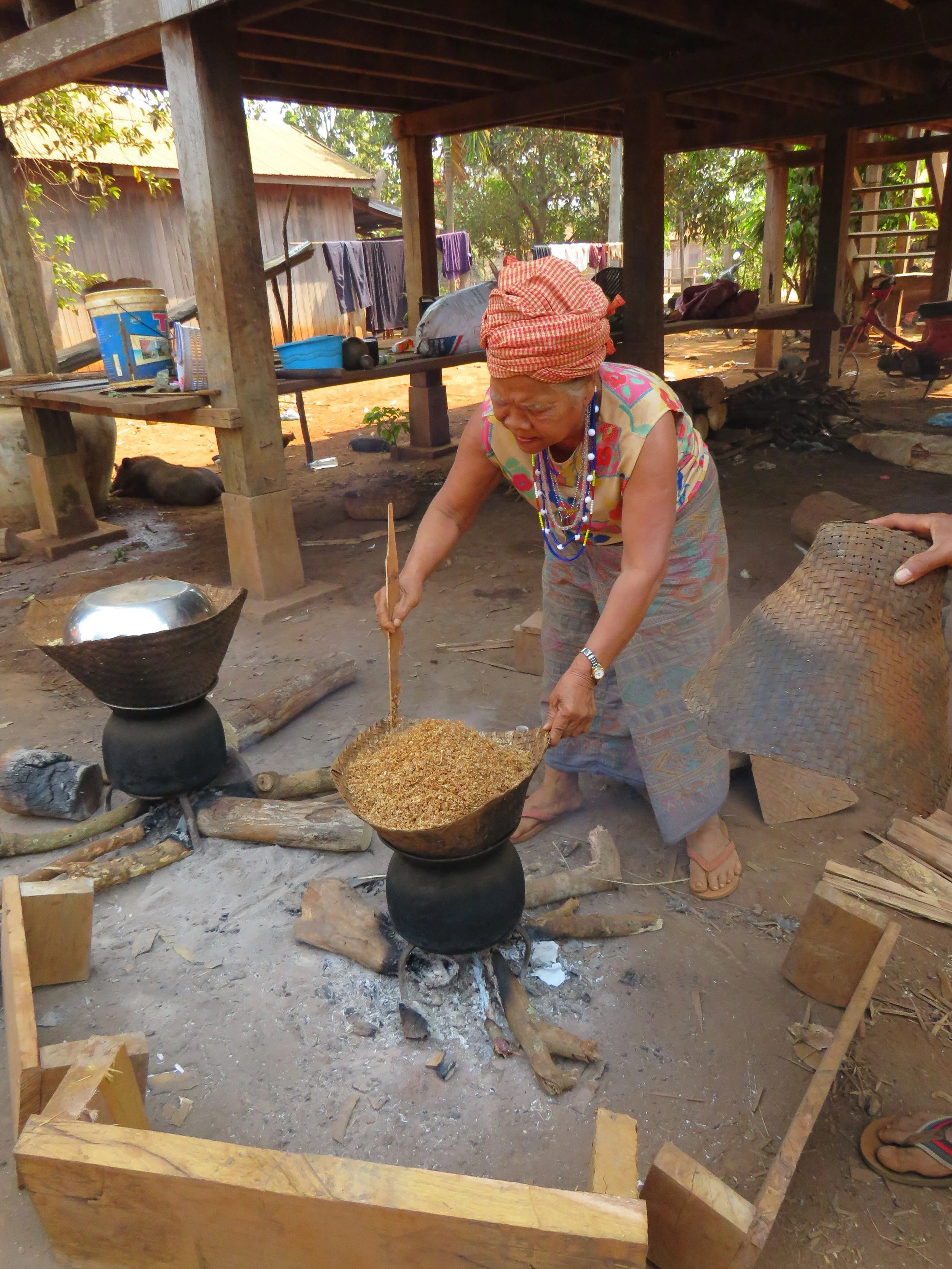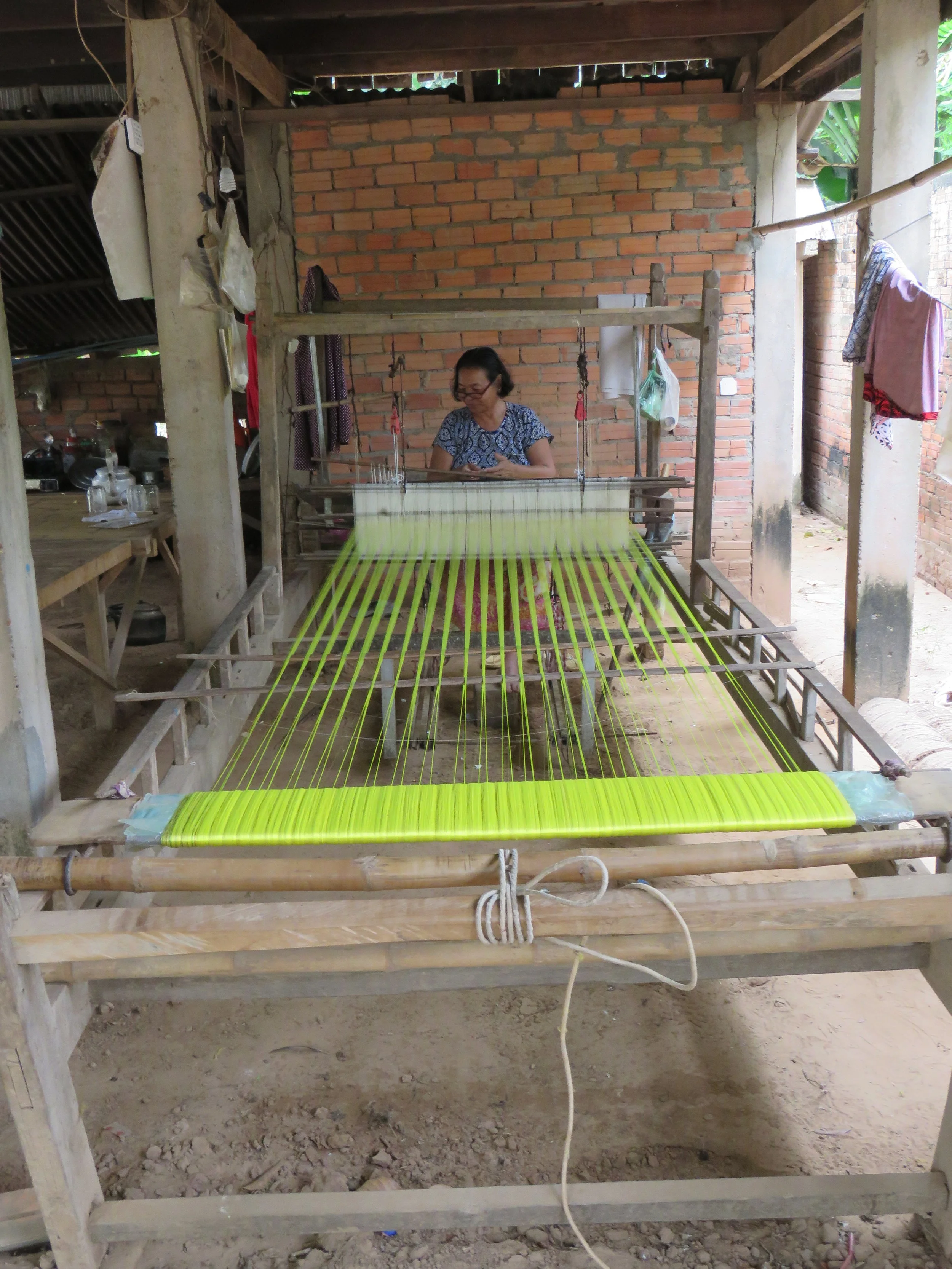Walking. Perhaps there is no better way to see your surroundings and get to know the locals than when you walk.
When we planned our trip to Cambodia, we wanted to see Angkor Wat, Siem Riep, and we wanted to hike.
We came across a website for Cambodia Cycling & Trekking that appealed to us. The company replied promptly and was very willing to tweak and answer questions. They offered a 15 day trek that included accommodations and luggage transport. The detailed itinerary would take us to National Parks and included details like “Day 3: Siem Reap to Kratie. Breakfast at the hotel, visit Kompong Kdei Bridge, transfer to Santuk Mountain, climb to hilltop pagoda, transfer to Kratie.” What we didn’t realize until we were actually there, is that the ‘transfers’ that day amounted to driving 400 KM. Each day listed the walking distance, ranging from 3 to 17 KM but also included driving to many different regions of the country.
Once we were in Cambodia, we realize that the oppressive heat and humidity plays havoc with your body. I found that, while I can normally handle a 10 KM hike no problem, here a 4 to 5 KM hike was fine but after that things became a struggle especially when the ‘hilltop pagoda’ was on top of 800 steep, uneven steps in the blazing sun.
800 steps up…
We had also not realized that the same guide and driver, two wonderful young, energetic men, would stay with us the entire time. The entire itinerary was tweaked to our interests and it was just the two of us plus the guide, no hiking with a large group. It was great to always have a local to explain things or to ask detailed questions. We could not have had a better guide than Poleak.
Even the dogs are pooped in this heat…
The listed distances both in the car and on foot, were not very accurate. We soon discovered we had to be very flexible and keep asking for details. ‘500 metre’ often was one KM. A ‘half hour’ often was double.
So, here we are hiking across Cambodia in 33º heat. Locals look at us in astonishment and ask “why?” I laugh, point at my husband and say “ask him”. Kees lóves the physical exercise. He loves the solitude of walking through the country side. He loves the challenge of long distance hikes with a big pack, walking day after day. After trudging along for several long distance hikes in Holland, for a tough one in Australia, for part of the Camino de Santiago, I decided that - much as I love him - I enjoy walking but not long distance hiking.
And so we look for compromises. Active holidays with lots of walking but the comfort of a good room and no lugging of luggage day after day.
The hammock restaurant where I picked up food poisoning…
Is a 15 day trek in Cambodia a compromise? I think so, although it is different from what we expected.
On day 3 or so I get a bad case of food poisoning by eating at a remote restaurant. This completely zaps me of energy so I skip a day of hiking and enjoy reading and writing in the air conditioned van. The next day we are to walk to an indigenous village. Not wanting to miss this, I decide to walk but tell our guide that 4 KM is too much for me. He agrees to drive further along and cut the hike in half. Unfortunately the road is blocked half way so we have no choice but to start walking. A local park ranger joins us, with a machete. Soon we leave the road and plunge into the jungle, where he cuts a trail for us. We trudge up and down hill, over logs, among brambles and thorns. It’s all very gorgeous and interesting, but I should have never attempted this in my condition. I have not eaten in three days, my insides are cramping and I thought I’d die. When we come to a small creek, I can’t scoop enough cold water on my head. But we have to keep going, we’re somewhere deep in the jungle.
A walk with a ranger.
‘Can you call a taxi from the jungle?’ I wonder as I hike on shaky legs.
The hardest jungle hike…
Then - “A motorbike!”. Everyone here rides motorbikes everywhere, even on a remote jungle track - and they all have cell phones.
“If you know where we are, can you ask the driver to send a motorbike?” At first they laugh but soon they realize I was serious.
Two motorbikes actually appear out of nowhere, in that dense jungle, zigzagging and jumping over boulders, coming down a deep dry creekbed. Alas, one is loaded with wood. The next one has no seat and is fully loaded with cassava. Plus they’re going the wrong way. I crawl on, sweat dripping down my face and splashing on the ground. My hands and knees are shaking. It’s 34º.
About 10 minutes before we reach the road, we come across a man with a motorbike who agrees to rescue me for 10,000 riel - about 2 dollars. He looks like a knight in shining armour on a white steed to me. Too bad he didn’t come along earlier….
We stayed in lovely guesthouses everywhere.
Sugarcane stand.
Our treks take us north, east and west. We love that we get to see so much of this beautiful country and its friendly people. My favourite walk, perhaps, was a simple stroll along a dirt road through a village. On a Sunday afternoon when most families were lazing around their yards (pretty unusual here for these hardworking people) this walk gave us a chance to see the real rural life. At every house, a throng of little kids comes running out of the dusty yard and greenery, calling “Hello! Hello! Hello!”, waving and beaming at us. When we wave and call back, more kids come running. Mothers wave with infants on their hips. Fathers grin from behind their rice wine or cans of Cambodian beer. Dogs listlessly approach, then plop down in the dust. Chickens scurry. Cows lift their heads but continue chewing thoughtfully. We buy sugar cane juice from one of the many machines parked in a driveway. The woman cranks length of sugar cane through the press, folds them, repeatedly pressing them. The juice drips into a bowl inside the glass contraption, she scoops it out into a plastic bag, ties it closed around a straw. Delicious! Sweet and refreshing.
Village kids.
We walked all around Angkor Wat where our guide led us through shady forests, along flat paths and on top of the ancient stone walls surrounding the temple areas. The hikes here were mostly easy and pleasant in beautiful nature, and much more appealing than hanging out with lots of tourists.
At every tourist attraction we see baggy cotton pants for sale with elephant prints. They look comfy but also make each tourist stand out since the locals don’t wear these pants. Elephants are depicted on bags and shirts and skirts and pillows. There are life size stone elephants at the entrances to temples. But no more wild elephants. In fact we have only seen one or two working elephants. Tigers, too, and even rhinos we’re told, used to roam the jungles but no longer. We see plenty of dusty dogs sleeping along the roads and in the shade of roadside stands. Very skinny cows graze in grassy fields. Apparently they are kept for milk and beef although we don’t see much meat on them. They are also kept for pulling wagons as are water buffalo. If someone owns a moto - a long handled motor that pulls a flat wagon - they can switch the wheel to blades that plow the fields.
Every village has lots of pigs and chickens.
We hear and see a fair number of birds, including white egrets. Lots of monkeys hang around temples and in the jungle.
There seem to be plenty of fish in rivers and lakes to provide food and livelihoods. But it seems to us that a huge threat to all wildlife is the unimaginable amount of plastic waste. Fields and roadsides are covered in plastic bags, plastic bottles, straws and pieces of styrofoam. The litter is found along roads and all city streets. River banks, fields outside the towns, everything is a vast wasteland of plastic, at least near populated areas. As we travel north where there is less development, there is also less garbage. Here and there we see large bales of plastic and pop cans collected. We are told these are hauled to Vietnam for processing because Cambodia does not yet have the equipment to recycle. Unless they educate people about the harmful effects of this plastic waste, both wildlife and tourism might suffer.
Do you know what this is?? It’s not how boxing gloves grow… It’s how cashews grow!
We have visited remote villages where lots of pigs run underfoot - fat mamma pigs followed by a whole slew of piglets. We also saw some pretty large spiders in the jungle and several geckos, one of which was molting. I didn’t know geckos molt like snakes. One morning we walked out of our room in a courtyard hotel. Very close by was a loud, strange noise - a cross between a barking dog or a honking duck, with the rhythm of a cat coughing up a hairball. It echoed and sounded alarming so I asked the girl at the desk what in the world that sound was. She waved nonchalantly, saying “Oh, just a spider.”
“Holy #$@%, a spider?! How big is it?”
A molting gecko.
She shrugged and spread her fingers, “Maybe the size of my hand. It weighs a kilo.” I contemplate not leaving my room for the remainder of the trip. I knew Australia has killer spiders but now Cambodia too, apparently. Then the girl scratched her head and added, “Oh, maybe not a spider, I think it is called a gecko in English.” My breath slowly returned. Geckos I can handle. Even if they bark like a duck/dog.
On one of our walks we visited a new temple rather than an ancient one. Bright orange robes of monks and a shiny gold altar sparkled amid the green of the jungle. We gave some money to a monk and in return he tied a thin red wool bracelet to our left wrist, chanting prayers, blowing on the knots he made, we felt blessed with his well wishes. I certainly hoped his prayers would help me as we climbed about one thousand stone steps up to the top of Kulen Mountain. Once at the top, we walked beautiful flat trails in the cool jungle, heard many birds and met one person searching for bees so that he could locate a hive, smoke out the bees and collect the honey which would fetch him $25 per liter.
We walked to a small jungle village with scrawny chickens and dusty dogs. Homes are built on stilts, for the monsoon season, and have a lower platform where people sit or sleep. Upstairs the room has a roof and sleeping space. The “kitchen” is the open space underneath the house or next to it - a simple coal or wood fire with a few pots. Clothes hang on a string between the posts under the house.
We reached the entrance to a National Park and walked along a river where, 800 years ago, people diverted the water to run from south to north. They paved the river bottom with one thousand ‘linga’s’. A linga is a spiritual symbol: a square carving is a female stone, a round one symbolizes male. These linga’s, together with a god image and lotus motifs, still decorate the river bottom. Even 800 years of flowing water has not eroded them. The river is thought to be a gift from Buddha and, once you see the river’s source, this is not surprising. It simply comes bubbling out of the earth: a crystal clear spring in a small blue puddle that grows into a powerful river.
Downstream we saw many people who come out for the Sunday to rent a small wicker platform with a roof. They were all cooking food, having a picnic, playing games and splashing in the river.
Even further down stream we came to 3 enormous, 30 meter high waterfalls. I loved cooling off in the cold water. We are often the only westerners and little children call out “Hello!” waving enthusiastically.
The next day we walked through a rubber plantation. Rubber trees were planted here in long straight row. The trees have about a 4’ section of bark removed with a shallow line which ends in a small bowl catching the rubber, which is collected daily. But the price of rubber has dropped so it isn’t very viable right now.
Rubber plantation
At work in her kitchen.
One day we boarded a ferry, on foot, to Koh Dach island which seemed to be similar in size to our own Salt Spring Island. Everyone on this island is a silk spinner or weaver. For generations, people here have been spinning the silk worm cocoon into thread, dyeing it and weaving traditional Cambodian cloths.
Underneath each house is a large loom. They are old and I found it mind blowing that they all still work. Some of the spinning was done with the use of a bicycle wheel to wind thread onto spools.
Almost every house on Koh Dach has a weaving loom.
We walked across the island, along the road we shared with thousands of motorbikes and bicycles. And with oxen being led to greener pastures.
We crossed a temple compound. School was out, then school started again. Little kids waved at us.
We stopped for a break of fried bananas and cold drinks.
Then we walked on along palms loaded with coconuts and huge bunches of bananas. There were mangoes and jack fruit.
We stopped at one house to admire, and buy, some scarves woven of cotton and silk.
And, finally, we reaches the ferry on the other side of the island which took us back to the mainland, not far from the big city of Phnom Penh.
In a next blog about Cambodia, we’ll tell you about the fabulous experience of a home stay.
RESOURCES:
Cambodia Cycling arranged our entire trip: https://www.cambodiacycling.com/Trekking.html
Our fantastic guide Poleak: https://www.facebook.com/poleakexplore
